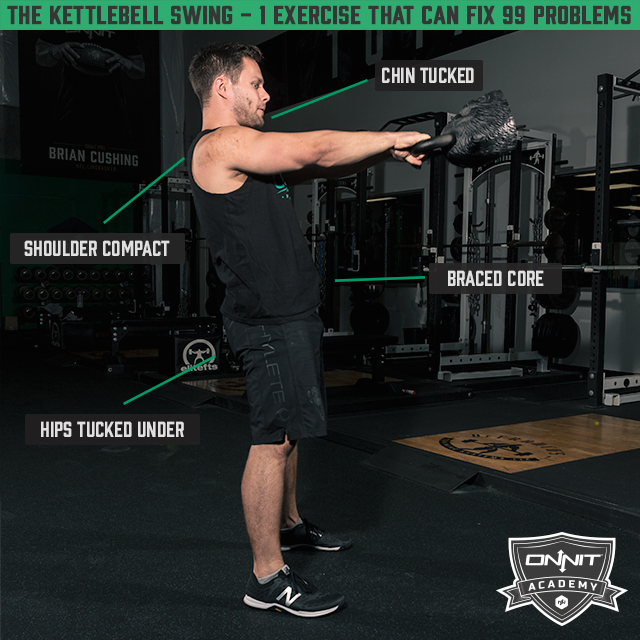"How do I press a heavier bell?" That is one of the top questions I've been asked over my years as an RKC kettlebell instructor. And it's not just asked by people who are preparing for a kettlebell certification where they'll have to meet a heavy press standard. As in any type of lifting, there is a pure feeling of accomplishment when you strict press a large kettlebell overhead.
This joy may be found in the old-time strongman image the bell taps into as you single-handedly hoist such an awkward ball of iron overhead. Part of it is the way that kettlebells generally jump up in increments of 4 or 8 kilograms rather than in tiny pound-based increments. To move up from, say, 70 pounds to 79 pounds or 88 pounds is a different game than moving from 50 to 55. And hell, pressing is just fun!
Unfortunately, it is all too easy to hit a plateau and get frustrated with your kettlebell press. No worries my friends, Fury's got you. Here are some proven ways to crush your current kettlebell-press PR!
For the sake of this piece, I'm going to assume you have the prerequisite healthy shoulder mobility. If you can't vertically lock your arm out at the top of the press, I would strongly advise you to work on your shoulder and thoracic mobility before moving forward. This is long-haul game. Play to win.
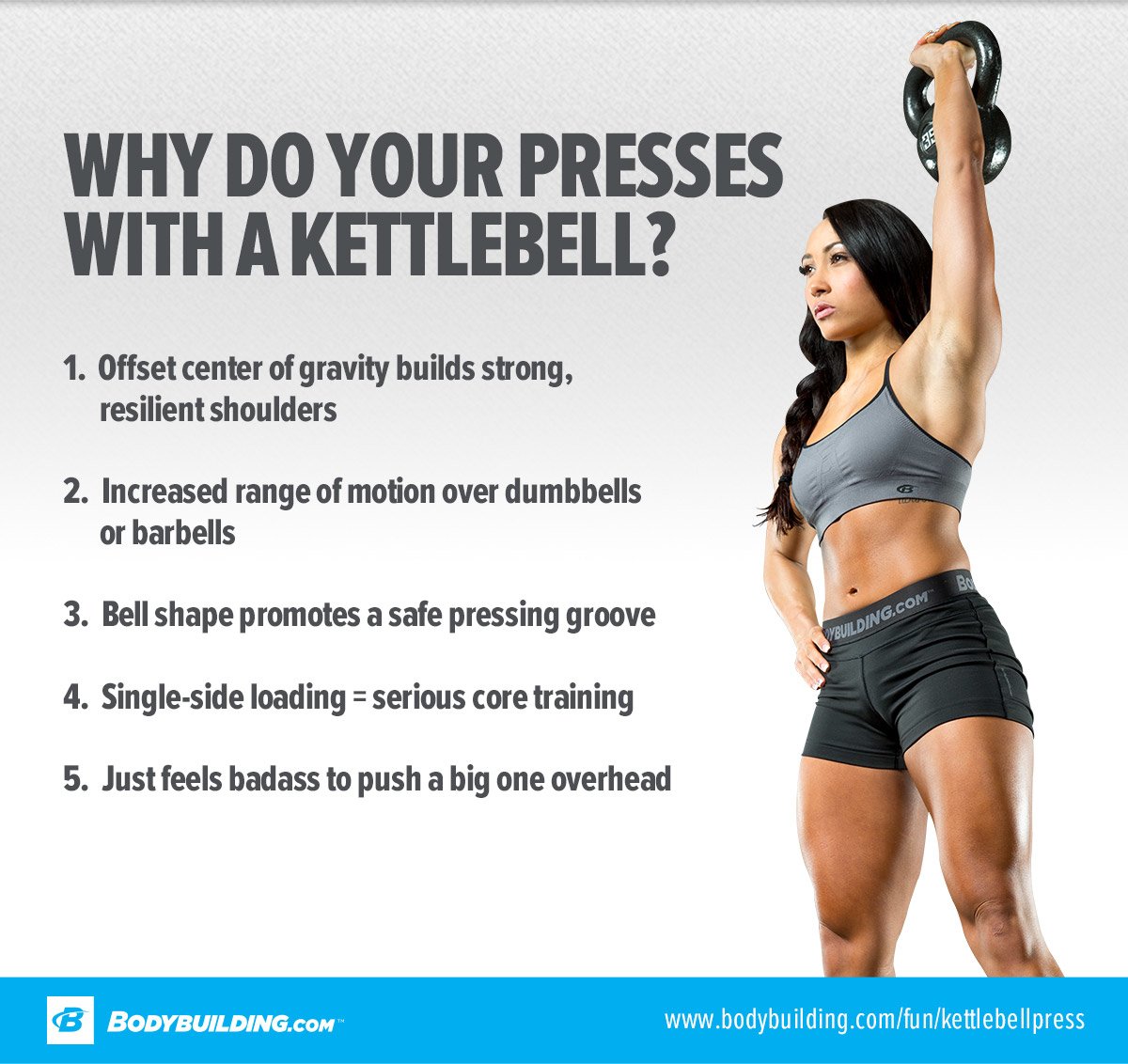
BREAK IT DOWN TO BUILD IT UP
When I help someone with their press, I start by deconstructing the movement into its three basic component parts, and then we work on each separately. The three areas are:
- Safely having a heavy kettlebell overhead
- The press groove
- The clean to get the bell into position
Then, I have them work on the best drills or movements to strengthen those press components.
TO STRENGTHEN THE OVERHEAD POSITION:
Assuming you're going to be embarking on a heavy pressing program to build up your press, it's crucial that you maintain or improve your overall shoulder health. Get-ups are an excellent way to both improve shoulder stability and maintain mobility.
However, heavy get-ups also happen to be the most accessible way to get used to carrying your goal bell overhead. Time and practice will remove any fear of having the big bell up there. On a neurological level, this allows you to take the brakes off when pressing.
I'd suggest doing heavy get-ups once a week. Try alternating 5 singles per side with your 3- to 4-rep-max bell, which is usually the next size up from the goal bell you're trying to press.
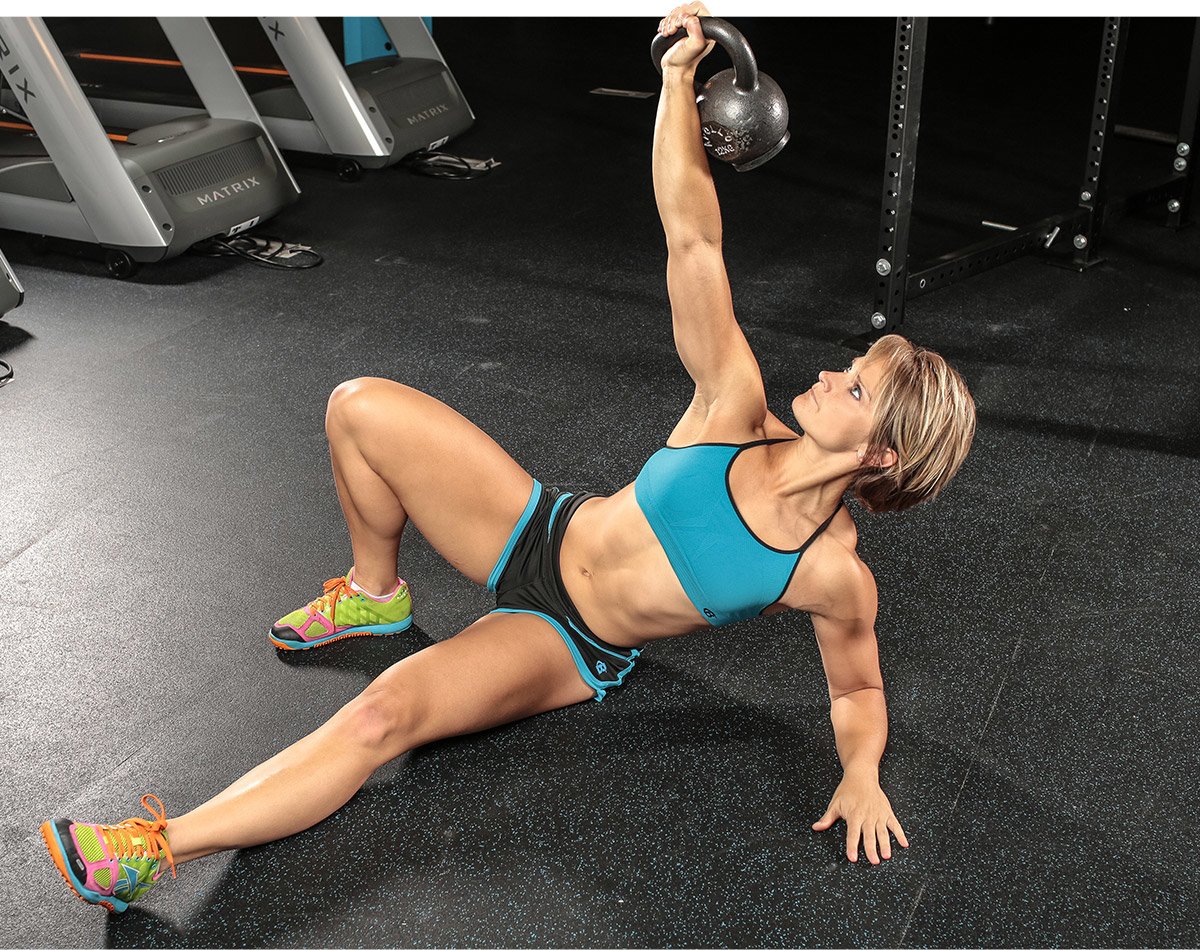
THE GET-UP
TO STRENGTHEN THE GROOVE:
Setting up your optimal press groove is crucial. Bad habits in your groove will become huge roadblocks as you progress. Bottoms-up pressing forces you to find the proper groove. Quite simply, the bell will fall over if you don't find the right trajectory. BUPs also force you to squeeze the hell out of the kettlebell handle. The tension generated by crush gripping will strengthen your shoulder and feed into your press.
Bottoms-up presses can be used as a warm-up to other presses or as a standalone on press day. However you use them, you'll need some volume to get strong at BUPs, as they can be quite humbling. Rep schemes like 3x5, 5x5, or 5x3 per side twice a week should do you right.
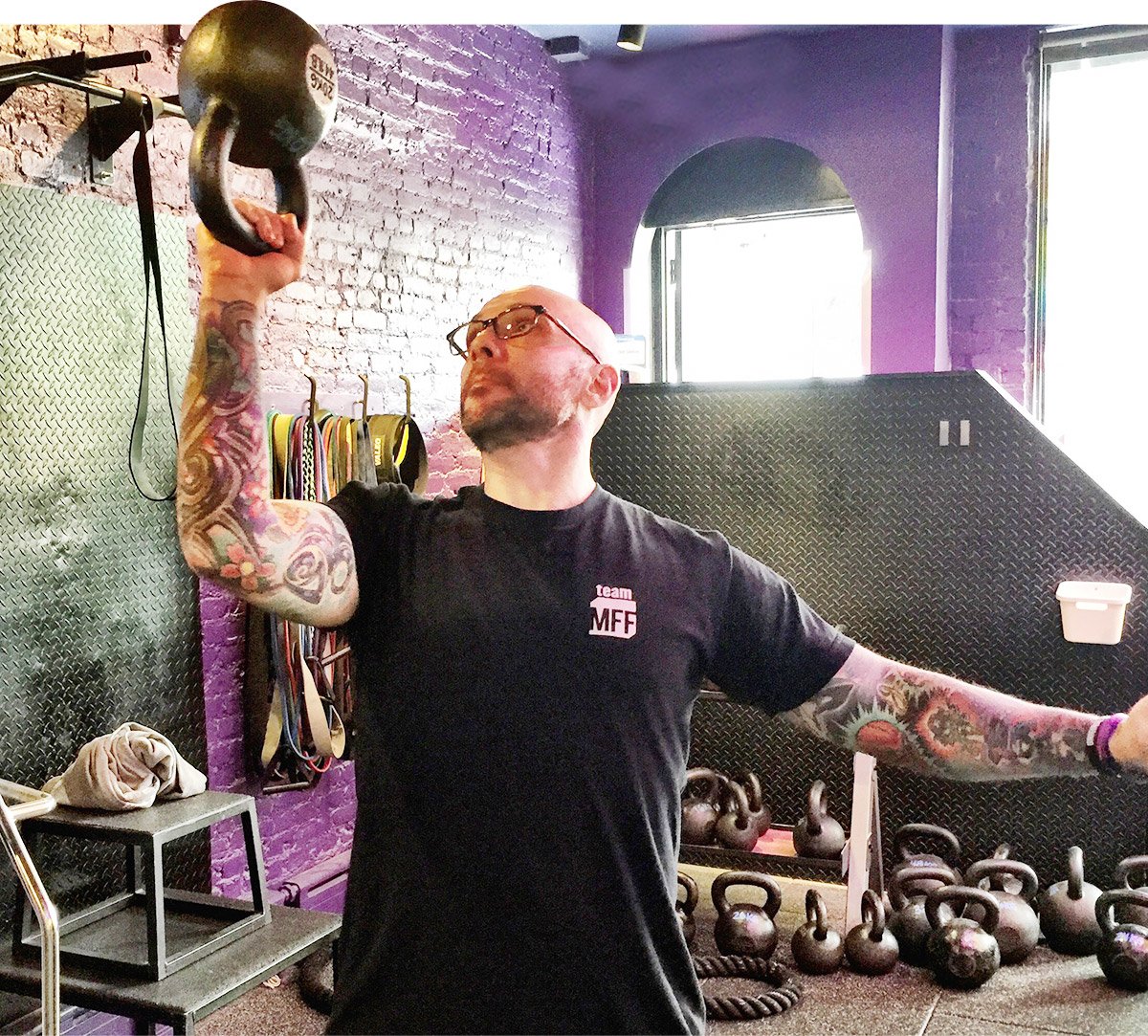
BOTTOMS-UP PRESS
TO STRENGTHEN THE CLEAN:
Cleaning double bells will have a tremendous payoff for your single-bell press. Why? The simple reason is that your body will get used to cleaning weight heavier than what your single bell will be. It's easy to forget that the kettlebell clean isn't just a way to get the bell into position to press. It's also a powerful movement on its own, requiring a solid backswing and plenty of tension to get the bell into position. Double cleans will "clean" your single clean like almost nothing else.
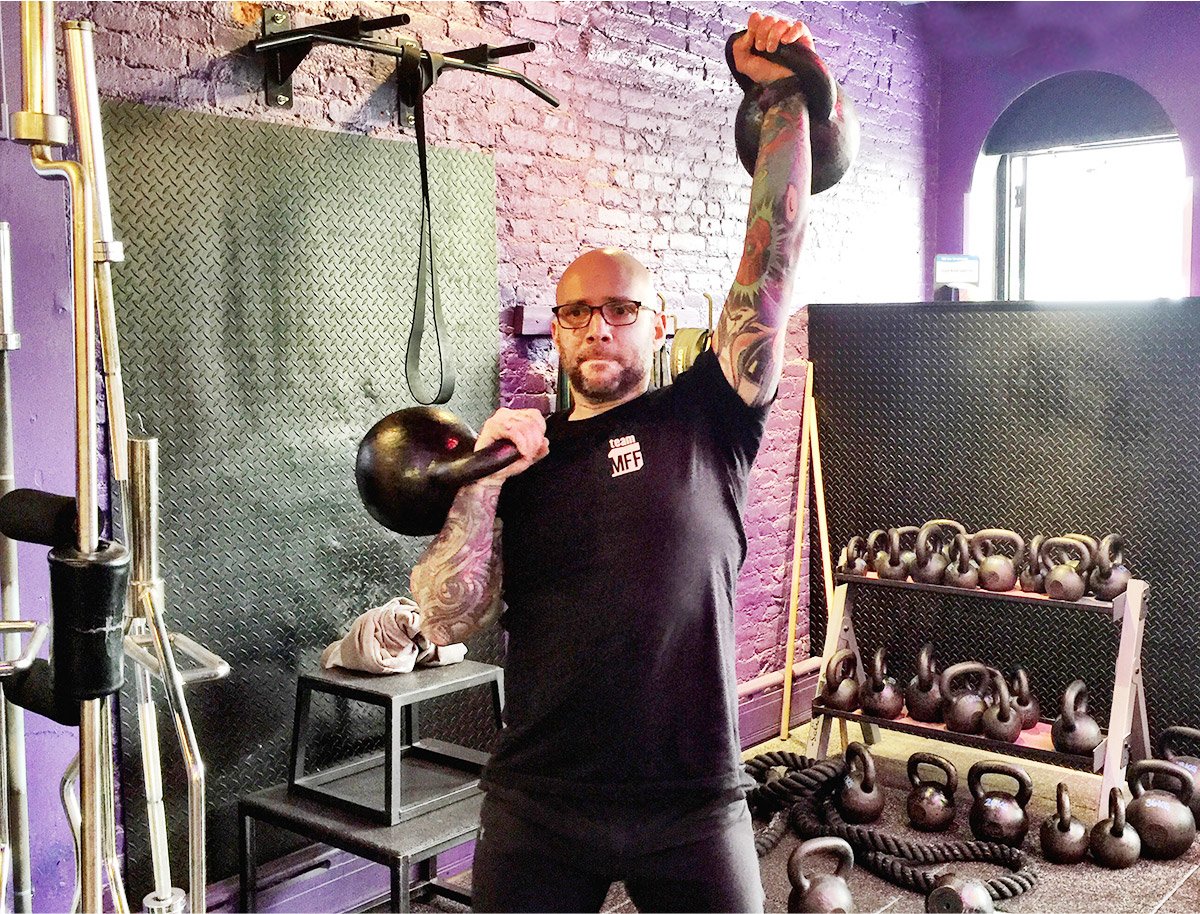
SEE-SAW PRESS
CORRECTING THE POST-CLEAN LEAN
When I witness someone fail a heavy single kettlebell press—and I've seen plenty of them—it usually goes south when they start to side-bend away from the bell right after the clean. Just as double cleans will help fix a sloppy clean, double presses can help your single press here.
How? Pressing two bells at once removes the ability to side bend. Using double bells will also help you to generate the full-body tension that will power your press.
Once you've become comfortable with double-bell presses, the seesaw press is an amazing way to build strength and competence in the pushing/pulling involved in pressing. Seesaw presses will force you to find and bring your lats into the fight.
For the double-bell clean and press, I would start with 3x5 of your 8-rep-max weight and build to 5x5 before switching to seesaw presses or a heavier pair of bells. I advise keeping seesaw presses in the range of 3-5 reps per side.
WEAPON X
The one exercise that had the most unexpected benefit to my press was backward leopard crawling. Not familiar with that movement? Here it is.
After being on a crawl-intensive program from Tim Anderson, the founder of the Original Strength system, I couldn't believe how strong and stable my shoulders felt.
Indulge me in an image for a second: When you crawl backwards, your shoulders basically become your hips and your arms become your legs. Everything has to work together, but in particular, each shoulder gets tied to the opposite hip in an X pattern. I found that building up time in a backward leopard crawl strengthened weak links in my shoulder girdle that I didn't know existed. Even just crawling on your hands and knees in a basic baby crawl can offer a restorative effect on your shoulders that can be a game changer when chasing a big press.
Take time building to 5 minutes of continuous backward leopard crawling, and see how sturdy your shoulders feel.
USE LADDERS TO CLIMB UP TO THE NEXT BELL SIZE
Strengthening the various parts of your press is one part of the game, but another is racking up some volume in your single-kettlebell press. This is where you start to put all of the other pieces together. Own the clean, crush the handle, press in the perfect groove, create tension throughout your body, and hold that kettlebell rock-solid at the lockout, then pull that baby back into the rack and repeat.
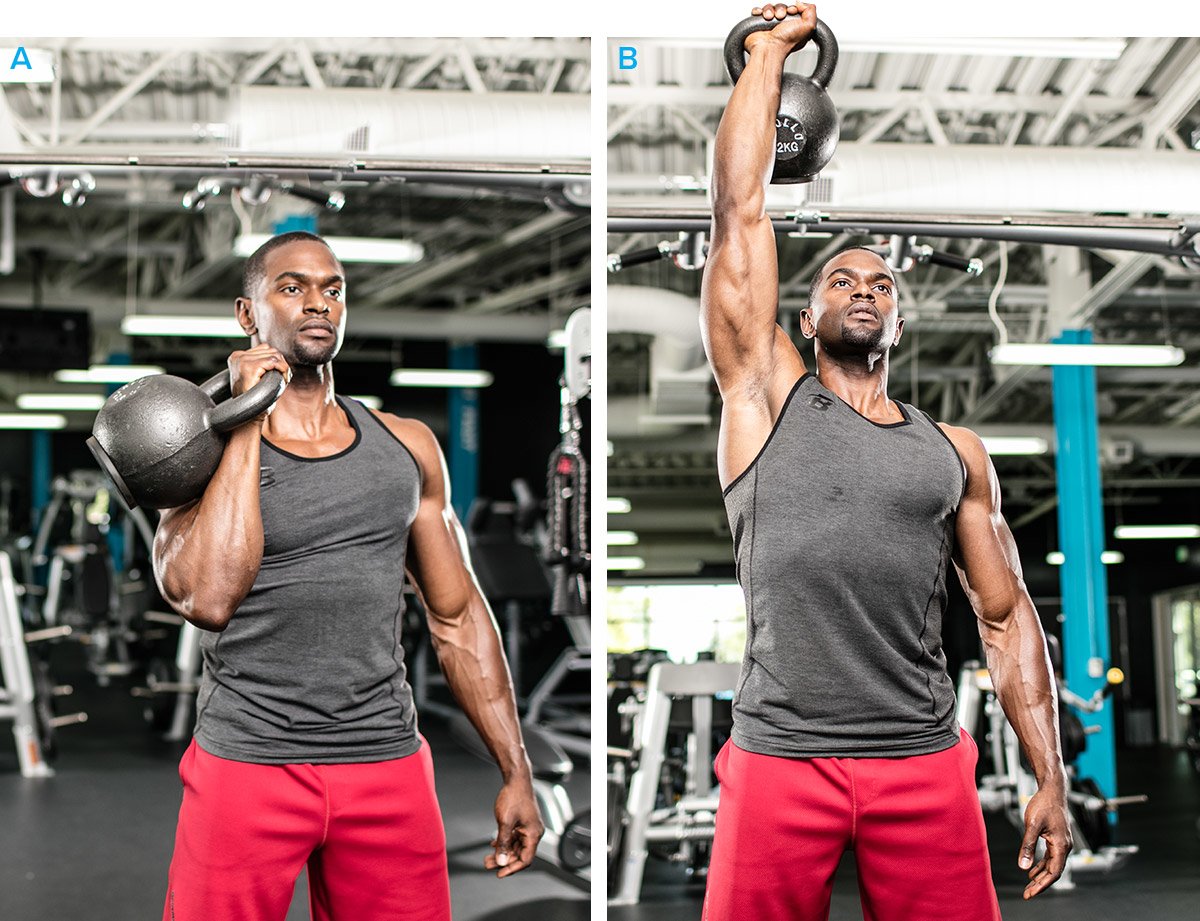
For maximum efficacy, use your 5-rep-max kettlebell, and perform ladders of reps, like this:
- Rung 1: 1 rep
- Rung 2: 2 reps
- Rung 3: 3 reps
After the third rung, start over at 1 rep, and repeat the sequence five times total. Rest as much or as little as needed, but definitely put the bell down between each rung. That range will leave you with 30 reps per side. When the third rep feels easy at the end, add a 4-rep rung to the ladder. When the fourth rung gets easy, go up a bell.
Try some of these things or all of them, and they will help you press a heavier kettlebell and earn that badass new PR!


